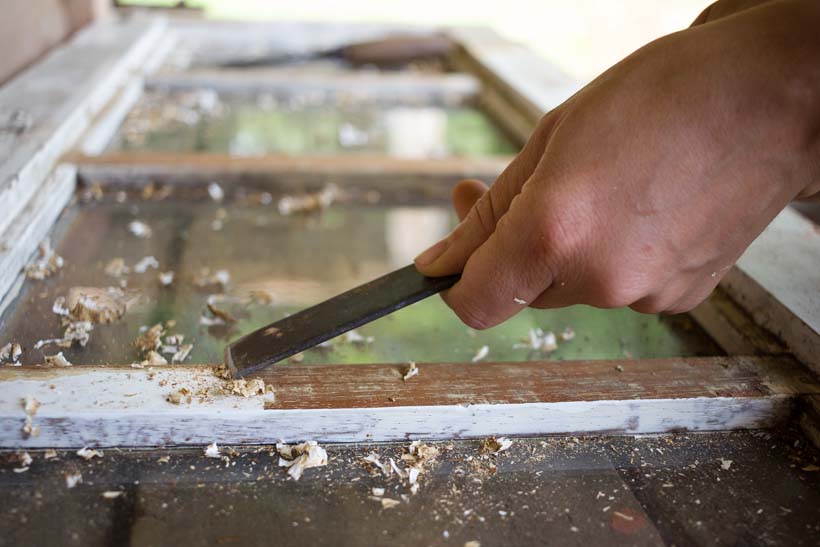Do you want to know how to stop paint from peeling on wood? The tightness of a paint on windows, doors, and other wooden objects depends largely on the type of wood you paint on. For example, some wood species retain paint better than others do.
Moreover, softwoods, especially those that grow in the high mountains and have rather small summer growth rings, or hardwoods with very small pores, hold the paint better than others.
Another factor to take into account is the quality of the wood. For instance, where the grain is irregular or there are many knots, the varnish layer will not be homogeneous.
The same is true for overhead varnishing. Their pores are much larger than those of the facade grain, thus absorbing more paint. Let us look in detail how to prevent paint from peeling on wood.
How to Stop Paint from Peeling on Wood
To make the final result more homogeneous, it is important to prepare these critical parts to receive the paint. The moisture content also influences the tightness of the paint. In addition, the the presence of resin, in certain woods such as pine, fir, larch, and pine will influence the painting result.
Finally, the way the board has been cut from the trunk also affects its ability to retain paint. For example, boards cut radially from the center of the trunk ensure a greater grip of the paint. That is because they have vertical grain.
Here Is A List Of The Most Suitable Woods To Receive The Paint:
- Cypress, Cedar, Scots Pine
- Silver Fir
- Pine, Hemlock
- Douglas, Birch, Maple
- Oak, Walnut
How to Stop Paint from Peeling on Wood – Preparation of Wood
The preparation of the wood, before you spread the first basic coat, is very important. Wood is a material that expands and shrinks, and the varnish will have to follow these movements. Furthermore, outdoors, the sun and the winter cold contribute greatly to this swelling and shrinking.
Always bear in mind that the varnish clings more easily on a porous surface than on a smooth surface. So if necessary, a good coat of sandpaper 100 will help to prepare the wood for a good grip.
If you want to ensure a truly protective coating, ask your paint manufacturer for a good quality product. It should be both preservative and waterproofing, and use it as a protective coat.
Number of Coats
Finally, we are at the decorative coats, which will have to be two, in addition to the primer. Do not think that by increasing the number of coats of paint you will have a better protection, you would be wrong.
Those who think of completely waterproofing the wood in order to prevent winter humidity from penetrating it, are mistaken. Even if it will penetrate with more effort, it will penetrate the same.
Then, in summer it will come out anyway, passing through the thick layer of paint that will probably be compromised.
Manual Brush Strokes
Manual brush strokes provide better protection than using a roller or spray. Take care to choose the right and above all quality brush. Be careful not to run the brush in all directions but only in one, with long and regular strokes.
If you apply too much paint at once, it is almost certain that after a short time the layer will crack. After you apply the first coat of paint, it is necessary to wait for it to dry perfectly before you proceed with the second one.
In addition, between one coat and the other, it is good to remove any impurities using a very fine sandpaper, from 220 to 320 depending on the impurities present. Once this is done, use a dampened sponge to remove all dust residues that could give rise to granules or other unsightly effects.
Conclusion
One last suggestion: Before you proceed with the work, always remember to read carefully the instructions on the can of paint. Further, you should mix the paint well before you start, and check that the brush is perfectly clean.

